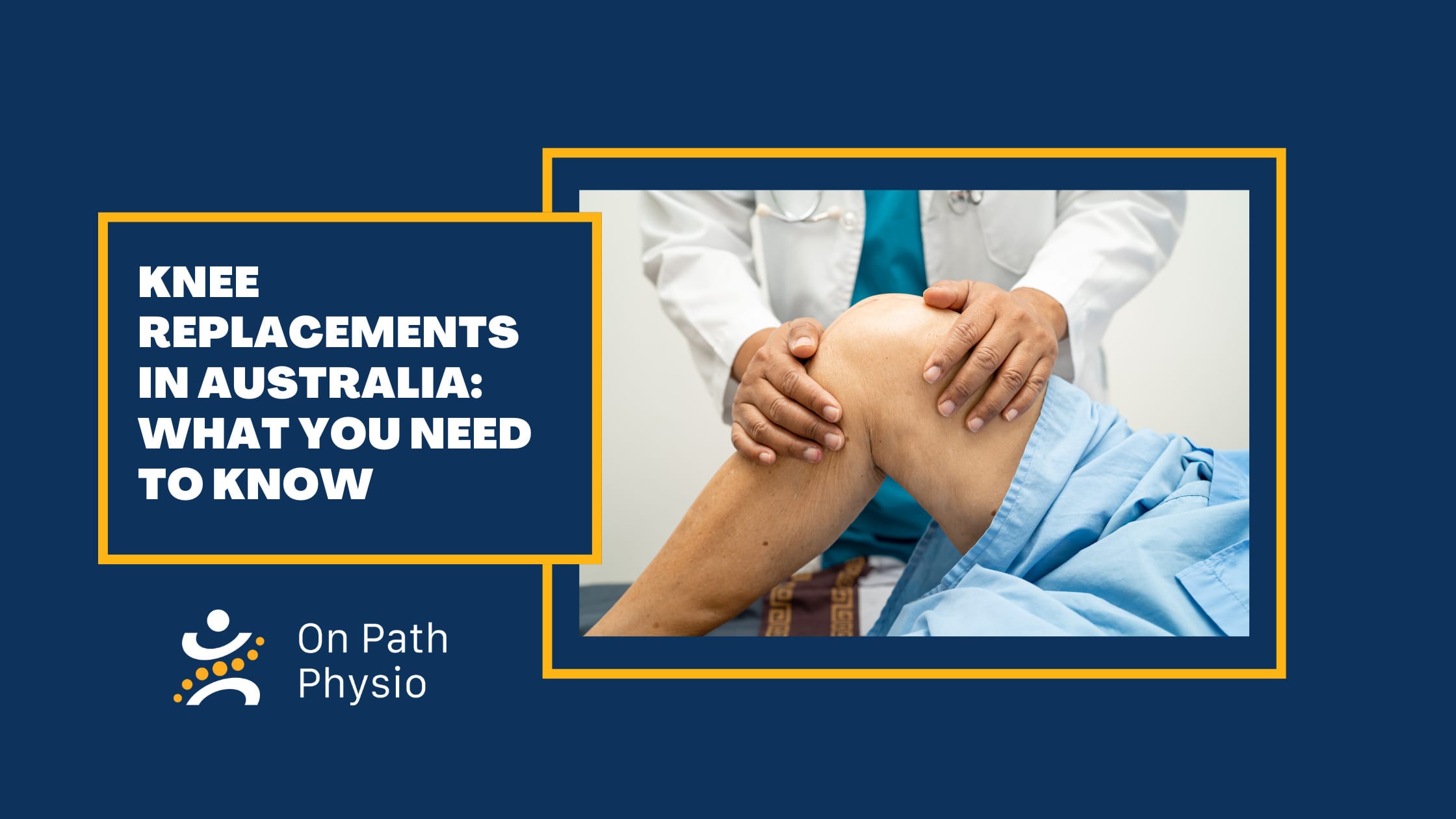Knee surgery, particularly total knee replacement, is set to become one of the most common procedures in Australia within the next decade with predictions exceeding 150,000 surgeries annually. In the meantime, the number of patients receiving knee replacements continues to climb steadily as demand grows.
But why are so many people heading down this path and what do you really need to know before considering knee replacement surgery?
Why Do People Need Knee Replacements?
There are several medical reasons someone might require a total knee replacement. While some cases arise from traumatic injuries, cancer, or multiple prior surgeries, the most common cause by far is osteoarthritis particularly as Australia’s population continues to age.
Osteoarthritis leads to the gradual wearing down of cartilage in the knee, eventually resulting in pain, stiffness, and reduced function.
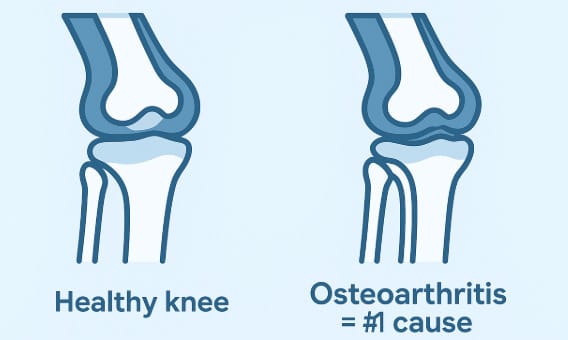
When Should you Consider a Knee Replacement?
Knee replacements shouldn’t be based solely on what an X-ray shows. Instead, two key clinical factors help determine when surgery might be appropriate:
1. Pain
Not just any knee pain. We’re talking about severe and frequent (if not constant) pain that interferes with daily activities like walking, shopping, climbing stairs, or even sitting comfortably. While pain medications might offer temporary relief, they don’t address the underlying issue.
2. Restricted Range of Motion
A knee that can’t fully straighten or bend properly significantly affects how you walk, sit, or move. Walking with a perpetually bent leg can also lead to problems in the hips and back. On the other hand, a knee that won’t bend makes activities like flying or watching a movie in the theatre uncomfortable or even impossible.
A frozen knee (one that won’t move at all) speaks for itself: it’s time to seek help.
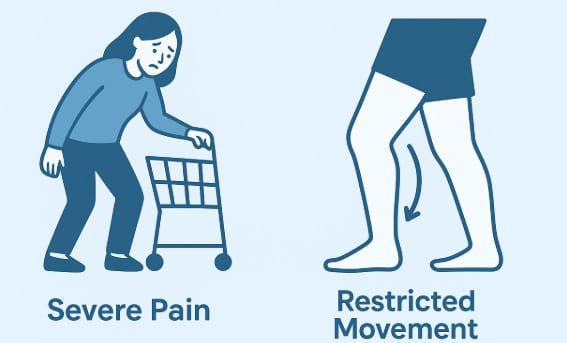
Do “Bone on Bone” Knees Require Replacement?
Many patients are told they have “bone on bone” knees based on X-rays a term often associated with severe degeneration. However, X-ray findings alone don’t justify surgery. There are many people with this appearance on scans who report little to no pain.
Conversely, others experience intense discomfort and limit their activity, which only worsens the issue. If your knee maintains a good range of motion, targeted exercise may still be effective, even if the joint appears heavily worn.
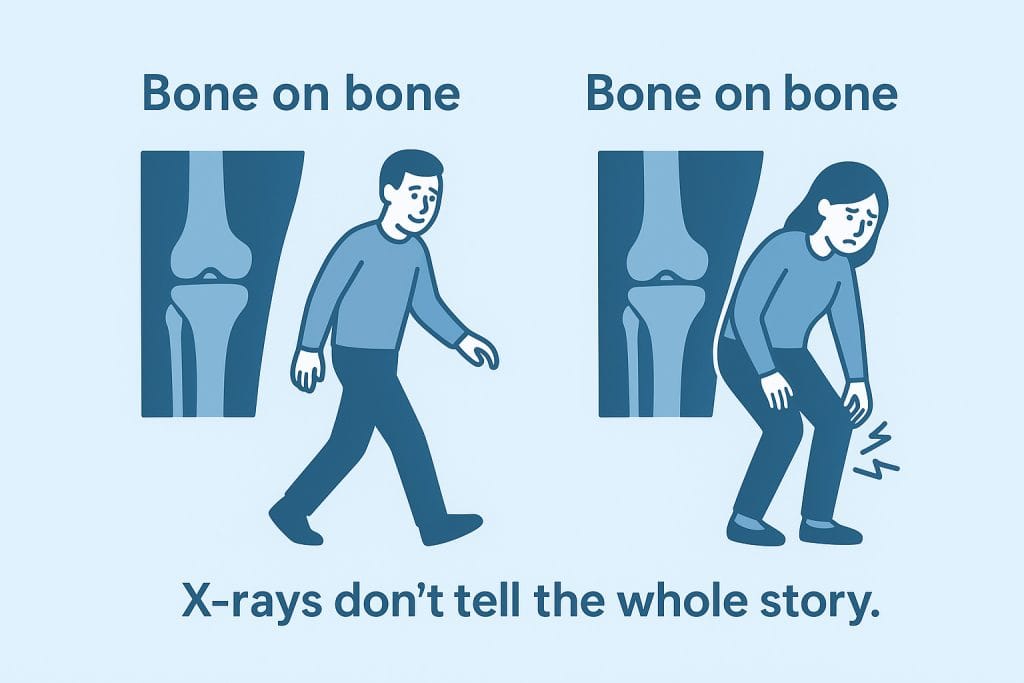
Is it Recommended to do Exercises Before Knee Replacement Surgery?
Some surgeons recommend pre-surgery exercise programs to strengthen muscles ahead of rehabilitation. While this sounds logical, there are two important conditions:
- If your knee is restricted, exercising may be too painful or ineffective.
- Muscles need time to strengthen — at least 4–6 weeks. If you stop exercising a week before surgery, most of that strength will be lost during your early recovery when you’re unable to use the leg fully.
The Crucial Role of Rehabilitation After Knee Replacement Surgery
Rehabilitation after surgery is the most important part of recovery. It directly influences how successful your knee replacement will be.
Most standard rehab programs involve two weeks of guided physiotherapy to help regain strength and mobility. The primary goals include:
- Fully straightening the knee
- Bending the knee to at least 100° (the angle needed for comfortable sitting)
But here’s what you need to be aware of:
1. Healing Complications Can Limit Progress
If post-surgery healing creates excess stiffness, exercise alone won’t fix it. Weak muscles at this stage make it even harder to overcome.
2. Pre-Surgery Limitations Affect Outcomes
If your knee was stiff before surgery, your quadriceps likely lack flexibility. Achieving full
function may take months not just a few weeks of persistent rehab.
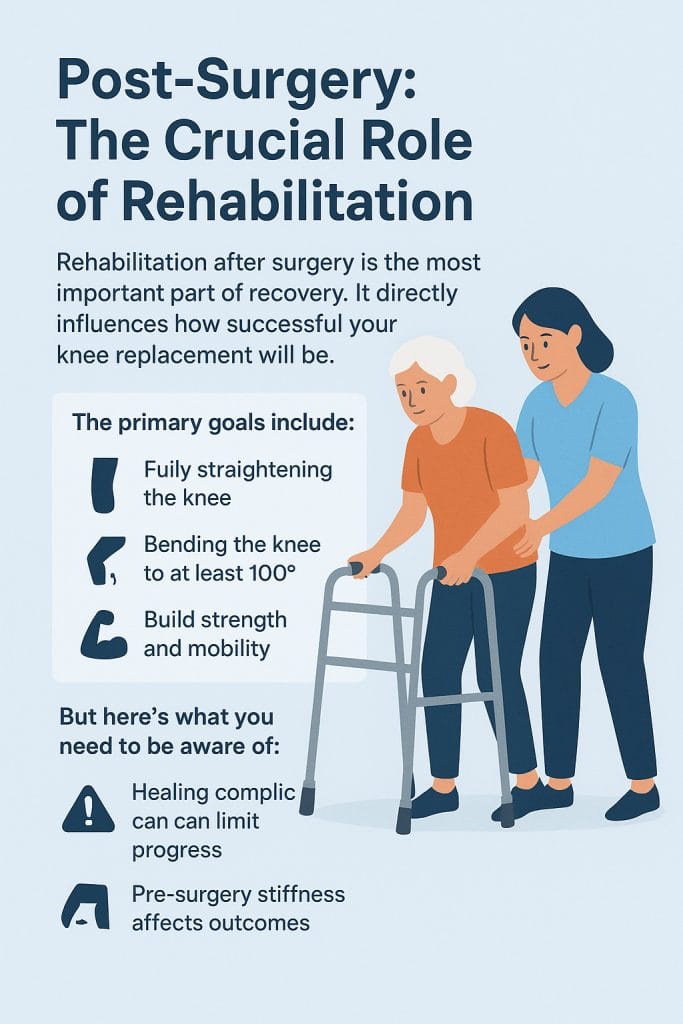
What’s the Ideal Outcome?
The minimum rehab goal is 100° of knee bend. But a better standard is reaching 120–130°, allowing you to:
- Squat
- Sit comfortably in most chairs
- Lie on your stomach and bend your leg to touch your foot
This degree of movement dramatically improves comfort and practicality in daily life.
Final Thoughts: Ask the Right Questions
If you’re heading into knee replacement surgery, make sure to ask your physiotherapist:
- What are the rehabilitation goals?
- What’s the plan if you’re not meeting those goals?
- What support is available post-surgery?
And remember, you don’t have to navigate it alone. If you’re unsure about your rehab pathway or whether surgery is right for you, On Path Physio is here to help.

